Have you ever thought, “Should I be calling myself a product designer or a UX designer?”

If you have, you’re not alone.
Many people in the UX (user experience) design industry are stuck on the same question. Some think the two job titles can be used interchangeably, while others are adamant that they are different.
But what’s the big deal? Why isn’t it OK to call the jobs by the same title?
Though they do have some overlaps, the general responsibilities of each role are different. Yes, both roles focus on user-centered design. But product designers take a broad, complete view of their product’s entire lifecycle, and UX designers are more specialized in the product’s user experience.
Plus, creating distinctions between the roles helps designers select positions they are more interested in or qualified for when job-hunting. It also helps design and project teams collaborate effectively.

If you’ve been using the wrong term to describe your job, don’t beat yourself up.
To be fair, most companies don’t get it right either — only increasing the confusion. Someone’s actual role may revolve around a product’s holistic strategy, but their job title may still be “UX designer” (when it should be product designer).
Are you still unsure of what your correct job title is? No worries.
Let’s continue to straighten this debate out. In this blog, I’ll review the core responsibilities of product and UX designers, their key skill sets, their typical workflows and deliverables, and then look at how both roles complement each other.
Core responsibilities
Again, product and UX designers sound like they do the same job, but their day-to-day responsibilities within a design project are quite different.
On the surface level, product designers are involved in a product from start to finish — meaning they’re brought into product meetings for initial brainstorming and remain through the product’s launch. On the other hand, UX designers do more specialized, hands-on work to produce design outputs such as high-fidelity UI (user interface) mockups or user flows.
Either way, both types of designers are critical to product development, but let’s review the core responsibilities of each role to better discern how they participate in a product’s lifecycle.
Responsibilities of a product designer
Other than championing a product from end-to-end, product designers are also expected to carry out the following:
- Meet the needs of the business — Product designers are expected to meet not only the user’s goals but also the business’s goals. This means they regularly meet with business stakeholders to ensure they’re satisfying the right key performance indicators (KPIs). Not only does this help the product thrive in the market, but it also helps the business recognize the value the design team contributes to the company
- Lead the product team’s design direction — Because product designers create the overall design strategy of a product, they also act as leaders for their product. They collaborate with product managers, UX designers, and researchers to ensure design requirements are fleshed out and communicated to the whole design team
- Ideate and develop product concepts — Though product designers seem more strategy-oriented, they are still creative by innovating ideas for product features that meet the user’s (and business) needs. That being said, product designers are very knowledgeable in research to make user-centered design decisions from the very start of the design process
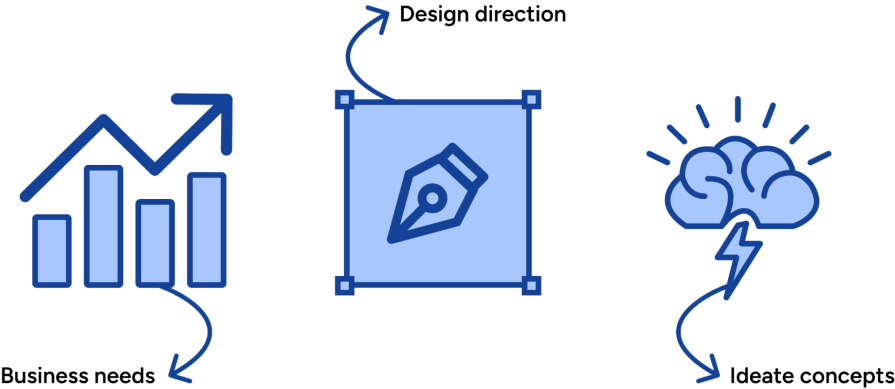
Responsibilities of a UX designer
UX designers are less focused on the product’s strategy (unlike product designers) and more focused on the actual design and usability of the product.
Other responsibilities include:
- Build user journey maps and user flows — After discussing a new product feature or module with a product manager (or product designer), UX designers create user journey maps and flows to better understand what the user is trying to accomplish and how they might effectively do it. Not only that, these exercises help UX designers develop empathy for the user and drive more functional product experiences
- Design low to high-fidelity wireframes and prototypes — Once a UX designer has developed user journey maps and/or user flows, they create low-fidelity wireframes to show to stakeholders for feedback. Though plain and simple, these wireframes effectively communicate the user’s journey through a product and the optimal way for them to complete tasks. After receiving this feedback, UX designers create high-fidelity wireframes and prototypes to deliver the final designs
- Conduct user research — Before product features are handed over to engineers for implementation, the designs need to be tested. UX designers run task analyses, A/B tests, or even interviews to ensure their designs meet user requirements. The testing results can give reassurance to the whole design team that a new feature is adding value to the product – increasing user satisfaction and return on investment

Key skill sets
Now that we’ve reviewed the core responsibilities of both product and UX designers, let’s get into their necessary skill sets.
There are some overlaps in must-have skills, but we’ll review each role’s distinct skill:
Product designer skill sets
Product designers are involved with their product at a high level from start to finish and require the following skills to succeed in their role:
- Collaboration — Since product designers are in charge of the entire design of a product, they collaborate with many different teams. This means talking with UX and UI designers, engineers, product managers, and researchers, just to name a few. These meetings are critical to ensure all cross-functional teams align with a product’s strategy
- Product vision — Product designers know the big-picture strategy of their product. They know the long-term goals of what the product should accomplish and the small steps they’ll need to take to get there. Product designers use this vision to align the product’s priorities with its established goals
- Problem-solving — Product designers are brought into the product’s lifecycle at the very start, so they’re bombarded with all the market and user research, pain points, and possible opportunities. But it’s up to them and their methodical thinking to ideate solutions that meet user needs, business objectives, and technical limitations
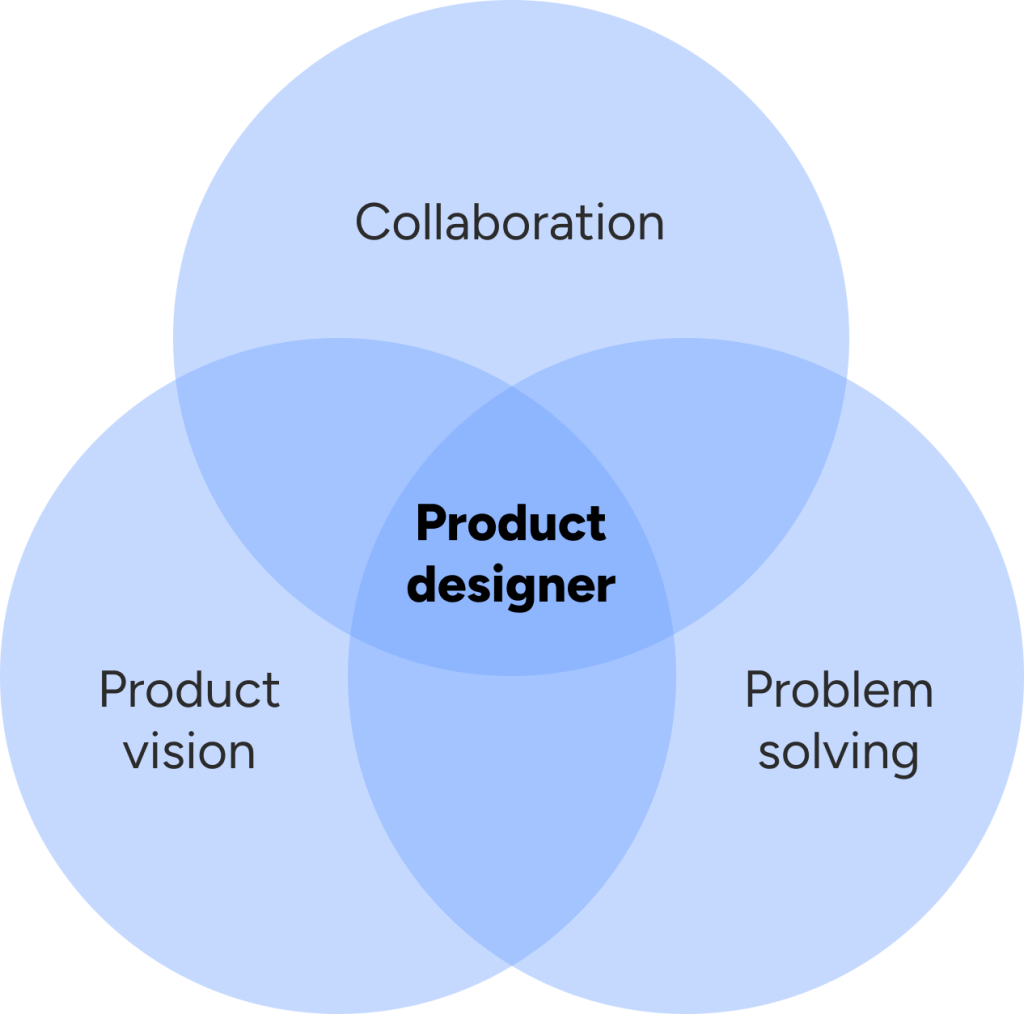
UX designer skill sets
UX designers do the more tactical, hands-on work needed from a product, but also require the following skills to develop an optimal user experience:
- Visual and interaction design — UX designers develop low-fidelity wireframes in tools such as Figma or Adobe and continue to iterate until they’ve reached high-fidelity prototypes to hand off to engineers. This requires strong skills in visual design to enhance interface aesthetics, communicate information, and create intuitive interactions that simplify user tasks
- Information architecture — Since UX designers define the user’s experience, they also ensure the information architecture of a product’s feature is optimized for the user. Organizing content, creating a visual hierarchy, and using consistent labeling across a product are all vital to a cohesive, understandable interface
- User research — As a UX designer develops user flows and wireframes, research is required to validate the designs with users. Doing so prevents implementing features that are confusing to users. Or even worse. Creating features that they won’t use at all. So UX designers complete research, whether it be quick A/B tests or moderated interviews for user-verified design direction
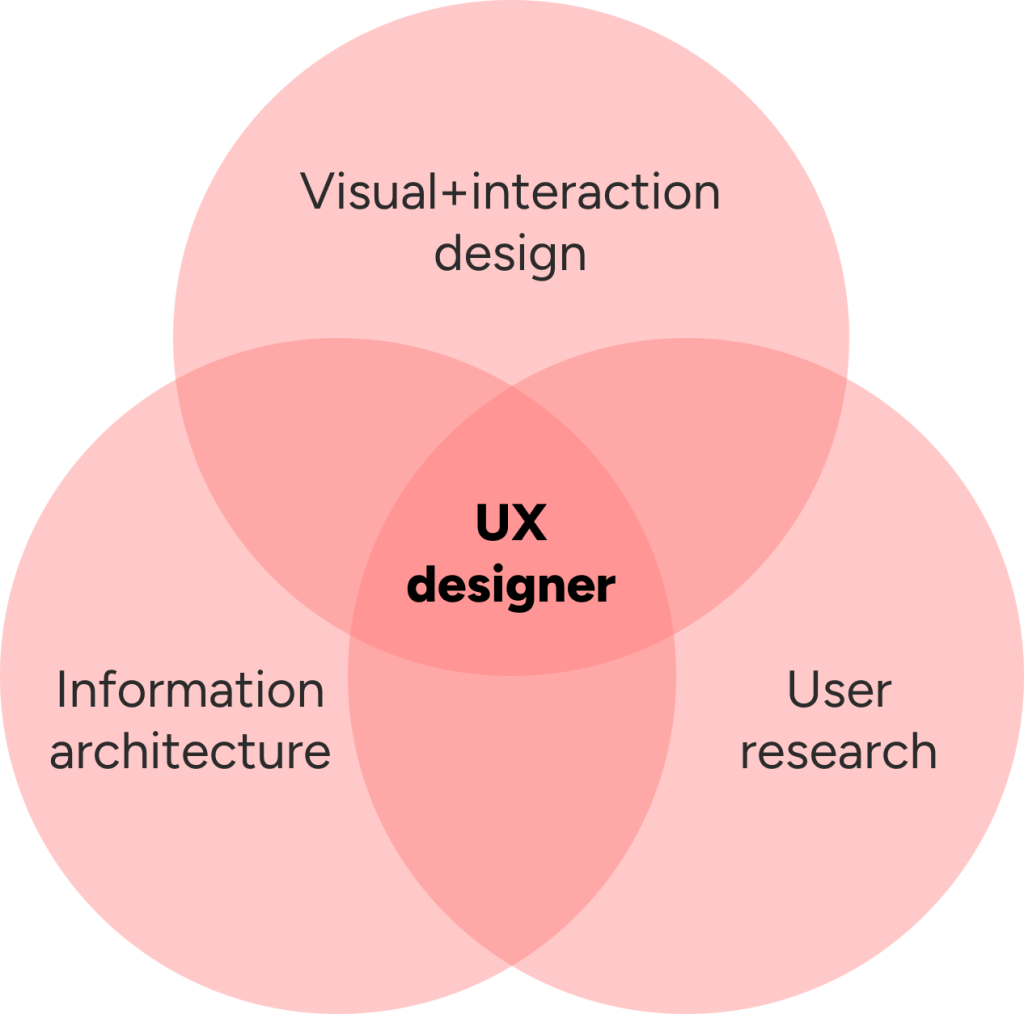
Comparing workflows and deliverables
The differences in responsibilities and skills between product and UX designers define their roles and involvement throughout the design process. These distinctions also shape the workflows they follow and the deliverables they produce for the product.
Product designer workflow
Since product designers are involved throughout a product’s lifecycle, they’re involved in many different workflows that often involve aligning with business stakeholders. They create a strategy and help execute it. This is done through the following (typical) workflow:
- Research — Product designers complete market research, stakeholder interviews, and user research to collect information on the competition, the business goals, and the pain points the users are experiencing
- Deliverable(s): Competitive analysis and key research insights
- Define the problem — With all the information from research, product designers (among other stakeholders) define a project brief by identifying user and business needs, functional and non-functional requirements, and feature priorities
- Deliverable(s): Project brief and timeline
- Ideation — Once a problem is defined, product designers develop concepts to solve the problem. This involves working with cross-functional teams to get different perspectives on the table, and using design thinking techniques such as mind mapping or “How might we?”
- Deliverable(s): One concept that is aligned to the project brief
- Design — Though this step heavily involves UX and UI designers, product designers are still very much involved in the design process. They help other designers brainstorm, give feedback, and ensure the designs are aligned with the product branding and project brief
- Deliverable(s): Final designs
- Development — Product designers ensure the engineering team has everything they need to implement the design work, as well as carry out QAs (quality assurances) once code has been created and a live demo is available
- Deliverable(s): QA feedback for the engineering team
- Post-launch — Once the final product is distributed to users, product designers inspect user feedback and monitor the overall product performance for any bugs. The user feedback and reported bugs are prioritized and sent back to the engineering teams for remediation
- Deliverable(s): Design and bug-fix prioritization list
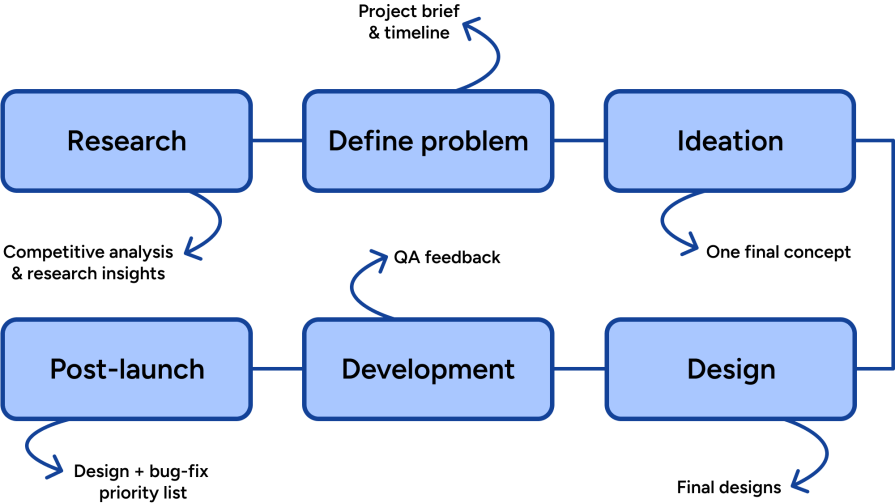
UX designer workflow
Though UX designers may not be involved at the very start of the product’s lifecycle, they are still brought into the early design stages of the project process.
A UX designer’s (typical) workflow looks like the following:
- Define user needs — Once UX designers receive feature requirements and understand the problem, they create user journey maps and personas to empathize with users, as well as identify their behaviors and motivations
- Deliverable(s): User journey maps and personas
- Information architecture — Before UX designers begin creating designs, they organize the needed content by sketching (on paper or digitally) to create a visual hierarchy, as well as develop flow diagrams to understand the decisions the user makes during tasks
- Deliverable(s): Low-fidelity sketches and flow diagrams
- Low-fidelity design — UX designers create low-fidelity wireframes (and/or prototypes) in tools like Figma or Sketch to demonstrate the user experience of a product feature. They then show the wireframes to stakeholders (and/or users) for feedback before progressing to a higher fidelity. Here, designers should also consider web accessibility to design with inclusivity
- Deliverable(s): Lo-fi designs and prototypes
- High-fidelity design — After the low-fidelity designs gain alignment from stakeholders, UX designers can create high-fidelity designs and prototypes – including design system components, branding, UX copy, etc.
- Deliverable(s): Final designs and prototypes
- Testing — Before handing the final designs to development, UX designers run usability tests with users to ensure the designs meet their expectations and don’t have a high rate of task failure (or general confusion). This step may require UX designers to refine the information architecture or overall designs for further testing
- Deliverable(s): Testing results and next steps
- Development — After the designs test well with users, they have the OK to be implemented. This requires the UX designers to hand off their design files to engineers, who will review the designs and create both the back-end and front-end code for development. During this step, UX designers will need to answer any questions the engineers have about the UI or its functionality
- Deliverable(s): Collaboration with engineers
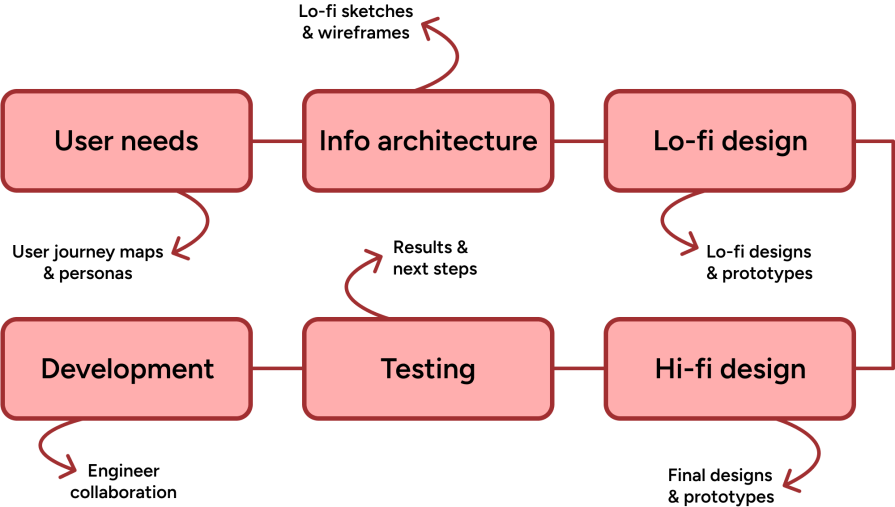
Overlapping and complementary aspects
Hopefully, by now, product designer and UX designer roles will feel distinct, and you know the importance of why they are labeled differently. But these designer roles aren’t siloed — they work together to contribute to the product’s overall design. Yes, there are some overlaps between the roles, but they complement each other rather than compete. They overlap so much that many UX designers convert product designers (sometimes vice versa).
Let’s talk more about how these roles collaborate and why designers transition between the two.
Collaboration
Although product and UX designers have separate responsibilities and workflows, they still collaborate to ensure the product’s user experience, interactions, and visual styling meet user and business expectations.
As product designers contribute their market and business knowledge to the design conversation, UX designers contribute personas, user flows, and tangible design work.
While collaborating, a product designer can give insight or feedback to any deliverable (personas to high-fidelity wireframes) a UX designer is presenting from the perspective of meeting business needs and maintaining UI consistency within the product’s ecosystem. Since product designers are highly informed on the complete strategy of the product, their feedback and reviews are critical to helping the UX designer create successful and enhanced user experiences.
After understanding the user and feature requirements, a UX designer creates designs to help bring a piece of the product strategy to life. Typically, they work in a design tool like Figma, and product designers and other stakeholders can natively review their work and leave comments for revisions.
When product teams are stuck between different ideas, product and UX designers can collaborate to conduct user testing to uncover the best approach.
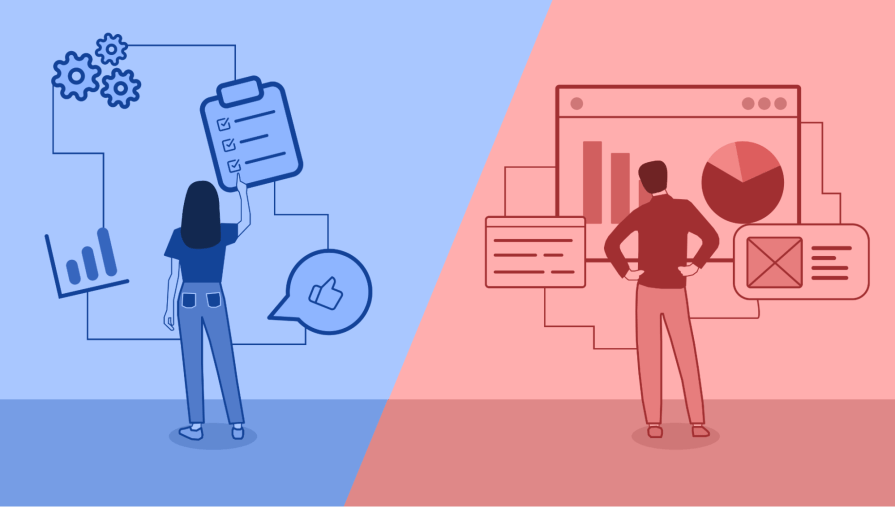
Transitioning between roles
Though we’ve reviewed the distinctions between product and UX designers, they also have many similarities (why there’s confusion between them!). As designers grow in one role, whether it be product or UX design, they may find other roles more suitable for them.
For instance, a UX designer who has been in their role for three or more years may want to transition to a product designer role because they want to be more involved in product strategy and meeting business objectives. On the other hand, a well-versed product designer may want to swap to a UX designer role because they want to be less involved with business stakeholders and do hands-on design work.
Regardless, both roles require user-centered design thinking, creative problem-solving, and collaboration. If you have those three traits, you’re well-equipped for either role. However, the type of responsibilities and workflows you want to have in your day-to-day life dictate which role truly fits your career goals and self-fulfillment from your job.
Conclusion
I get it. The job titles of “product designer” and “UX designer” seem very similar, and many people (even companies) use them interchangeably. But they represent different jobs with distinct responsibilities, skill sets, workflows, and deliverables.
Product designers see a product through from start to finish. They create the big-picture strategy for a product that meets both the user and business needs. On the other hand, UX designers carry out hands-on work to produce tangible designs that stakeholders (including product designers) can use for further iteration and optimization.
The general responsibilities are different for each role, as are the skill sets needed.
Product designers need a strong sense of collaboration, product vision, and problem-solving to align all cross-functional teams to the same product goals.
But UX designers require solid skills in visual and interaction design, information architecture, and user research to create aesthetically pleasing, understandable, and simple designs.
Though product and UX designers are different from each other, they do overlap in their complementary skills. They collaborate by leveraging their strengths in discussions to guide the product’s designs toward meeting user and business goals. And since most product and UX designers have similar skill sets, it’s not uncommon to see designers transitioning between roles to find which workflow they enjoy more.
So, which role do you identify with more?
Which role do you want your design career to progress in?
The post Product designer vs. UX designer: Roles, skills, and more appeared first on LogRocket Blog.